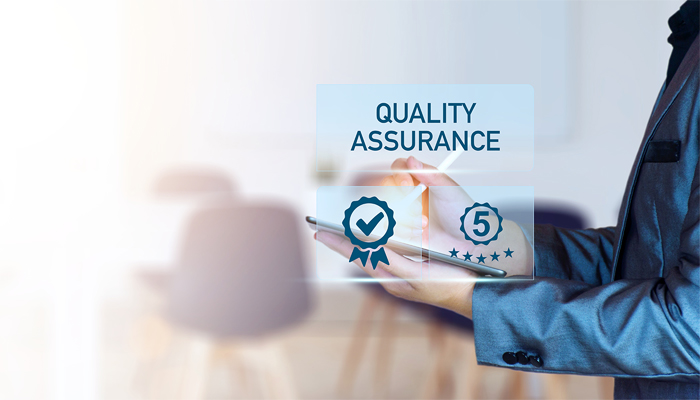Quality assurance serves as the cornerstone of exceptional call center performance, directly impacting customer satisfaction, agent development, and organizational success. Yet despite its critical importance, many of us fall into predictable QA traps that undermine our efforts and limit our potential for growth.
Recent industry research reveals a startling reality
73% of call centers struggle with ineffective quality assurance programs that fail to drive meaningful performance improvements. We invest significant resources in QA initiatives but see minimal returns because we’re making fundamental mistakes that sabotage our success from the start.
The cost of poor-quality assurance extends far beyond missed coaching opportunities. When our QA programs fail, the entire call center ecosystem suffers—from frontline agents to executive leadership, resulting in higher turnover rates, declining customer satisfaction scores, and missed revenue opportunities.
Here are the five most critical call center QA mistakes we make, providing proven strategies to transform your quality assurance program from a compliance checkbox into a powerful driver of operational excellence and business growth.
What Makes Call Center Quality Assurance Effective?
Before diving into common mistakes, let’s understand what separates high-performing QA programs from those that struggle to deliver results. Effective quality assurance goes beyond simple call monitoring—it creates a comprehensive system that drives continuous improvement through strategic evaluation, targeted coaching, and data-driven insights.
We’ve seen that modern QA programs leverage technology to analyze 100% of customer interactions rather than relying on small sample sizes. This comprehensive approach ensures no performance gaps go unnoticed while providing us with the complete picture needed for informed decision-making.
The most successful QA initiatives we’ve observed align evaluation criteria with business objectives, ensuring that every metric measured directly contributes to organizational goals.
Mistake 1: Evaluating Too Few Calls
The most pervasive mistake we see in call center quality assurance is the reliance on inadequate sample sizes that fail to provide meaningful insights into agent performance. Most of us typically evaluate only 1-3% of total interactions, creating massive blind spots that allow performance issues to persist undetected.
The Hidden Costs of Small Sample Sizes
When we evaluate only a handful of calls per agent monthly, we cannot identify:
- Inconsistent performance across different interaction types
- Skill gaps that manifest only in specific customer scenarios
- Training needs that require immediate intervention
- Coaching opportunities that could prevent customer escalations
Strategic Solutions for Comprehensive Coverage
1. Implement Technology-Enabled Monitoring: We recommend modern speech analytics platforms that can evaluate 100% of customer interactions automatically, providing comprehensive performance insights without overwhelming our QA teams.
2. Develop Risk-Based Sampling: When complete monitoring isn’t feasible, we should implement strategic sampling that focuses on high-risk interactions, new agent calls, and customer escalation scenarios.
Mistake 2: Inconsistent Evaluation Standards
We’ve observed that subjective evaluation criteria and inconsistent scoring create confusion, frustration, and unfair performance assessments that undermine agent trust and program effectiveness. When our evaluators apply varying standards, quality assurance becomes counterproductive rather than developmental.
The Impact of Subjective Scoring
Research shows that call centers with inconsistent QA standards experience 40% higher agent turnover rates compared to organizations with standardized evaluation processes. Our inconsistent standards create:
- Agent confusion about performance expectations
- Unfair comparisons between team members
- Reduced trust in our QA process
- Inability to identify genuine training needs
Building Standardized Evaluation Frameworks
1. Develop Clear Performance Rubrics: We need detailed scoring guides that define exactly what constitutes excellent, satisfactory, and needs improvement performance for each evaluation criterion.
2. Implement Calibration Sessions: We should conduct regular meetings where our evaluators review the same calls and compare assessments to ensure consistent application of evaluation standards.
3. Leverage Automated Scoring: Advanced QA platforms can provide us with consistent, objective scoring based on predetermined criteria, eliminating evaluator bias.
Mistake 3: Focusing Only on Negative Feedback
Many of us fall into the trap of deficit-focused evaluation that emphasizes problems while ignoring strengths and achievements. This negative approach demoralizes our agents, reduces engagement, and misses valuable opportunities for positive reinforcement.
Strategies for Constructive QA Programs
1. Implement Strength-Based Coaching: We should begin every evaluation by highlighting specific examples of excellent performance. This positive foundation creates receptivity for improvement discussions.
2. Create Recognition Programs: Let’s use our QA data to identify top performers and exceptional interactions that can serve as examples for team training.
3. Balance Improvement Focus: For every development area we identify, we must provide specific, actionable guidance on how to improve.
Mistake 4: Failing to Act on QA Data
Perhaps the most frustrating mistake we make is conducting thorough evaluations but failing to translate insights into meaningful action. Many of us collect extensive QA data that sits in reports without driving coaching conversations or process improvements.
The Action Gap in Quality Assurance
When our QA findings don’t result in targeted interventions, several problems emerge:
- Performance issues persist and potentially worsen
- Our agents lose confidence in the QA process
- Training resources are misallocated
- Customer experience problems continue unaddressed
Creating Action-Oriented QA Processes
1. Establish Coaching Protocols: We need structured processes that ensure every QA evaluation results in specific coaching conversations with clear improvement goals and timelines.
2. Implement Closed-Loop Feedback: Let’s create systems that track improvement progress following QA evaluations, ensuring our coaching recommendations translate into actual performance changes.
3. Develop Training Programs: We should use our QA data to identify common skill gaps and develop targeted training initiatives.
Mistake 5: Ignoring Agent Feedback and Input
Traditional top-down QA approaches that exclude agent perspectives miss valuable insights and create resistance to our improvement initiatives. When our agents feel excluded from the quality assurance process, they become less engaged with feedback.
Building Collaborative QA Partnerships
1. Create Agent Self-Assessment Opportunities: We should implement processes where agents evaluate their own performance before receiving formal QA feedback.
2. Establish Feedback Channels: Let’s develop formal mechanisms for our agents to provide input on QA processes, evaluation criteria, and coaching effectiveness.
3. Involve Agents in Standard Setting: We must include experienced agents in the development and refinement of our evaluation criteria.
Transforming Your Call Center QA Program
Avoiding these common mistakes requires a systematic approach to quality assurance transformation. We’ve seen that organizations successfully overhauling their QA programs follow a structured implementation process.
Implementation Framework
Phase 1: Assessment and Planning We need to evaluate our current QA processes to identify specific weaknesses and improvement opportunities.
Phase 2: Technology and Process Enhancement Let’s implement advanced QA platforms that enable comprehensive monitoring while standardizing our evaluation processes.
Phase 3: Team Development and Training We should provide comprehensive training for our quality assurance teams, supervisors, and agents on new processes and expectations.
Phase 4: Continuous Improvement We must establish ongoing monitoring of our QA program effectiveness through both performance metrics and stakeholder feedback.
Your Next Steps Toward QA Excellence
Transforming our call center quality assurance programs from compliance-focused to performance-driving requires commitment, resources, and strategic planning. The investment pays dividends through improved agent performance, enhanced customer satisfaction, and stronger business results.
Let’s start by conducting an honest assessment of our current QA practices against these five common mistakes. We should identify which areas need immediate attention and develop implementation plans that address both technological and cultural elements.
Remember that effective quality assurance is not a destination but a continuous journey of improvement. Organizations that embrace this mindset while avoiding common pitfalls create sustainable competitive advantages through superior call center performance.
Ready to Transform Your Call Center QA Program?
QEval’s comprehensive quality assurance platform helps us eliminate common QA mistakes while driving measurable performance improvements. Our advanced technology combines automated evaluation capabilities with collaborative coaching tools to create data-driven quality assurance programs that deliver real business results.
Schedule your QEval demo today and discover how modern QA technology can transform our call center performance together.




